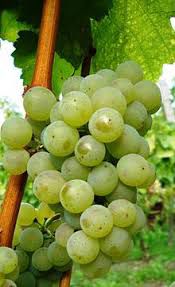
Silvaner makes a comeback
After an inauspicious beginning, Silvaner is poised to become one of Europe's great aromatic white varieties, according to sommelier Andrej Grunert.
That was the key takeaway from a recent tasting held in Munich, at the Schwarzreiter Tagesbar & Restaurant. Head sommelier Grunert told Harpers the grape's reputation was being saved by a growing firmament of quality conscious winemakers in Franconia, north-west Bavaria.
“Historically, great volumes of Silvaner were planted in Germany after the Second World War – harvested at high yields, Silvaner produced turgid wine that was often blended into Liebfraumilch. As a result, its reputation was severely tarnished,” said Grunert.
However, the grape has undergone a renaissance in recent years, said the Munich-based sommelier, with better site-selection and lower yields producing aromatic wines of considerable finesse and elegance.
“Today, the grape is recognised in Franconia and Saale-Unstrut as qualifying for Grosse Gewachs status (Grand Cru) in selected terroirs,” added Grunert.
“Such an occurrence would have been unthinkable decades ago.”
In addition, Silvaner has been produced as an Alsace Grand Cru wine since 2006, although only one vineyard – Zotzenberg – is entitled to do so.
The grape, thought to originate from the Austrian Empire, is a cross between Traminer and “Austrian white.”
Winemakers in Germany are also experimenting with oak maturation, said Grunert, which was previously unheard-off.
“The interest is growing and growing,” he said. “One of my colleagues, winemaker Christian Muller, even had a tattoo imprinted on his left arm - ‘Main Silvaner rocks’.”
However, currently only tiny volumes of the grape are exported. It remains a domestic phenomenon.




